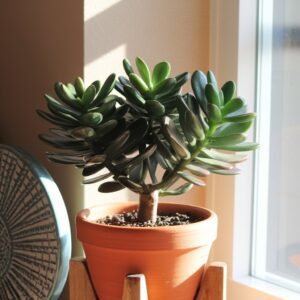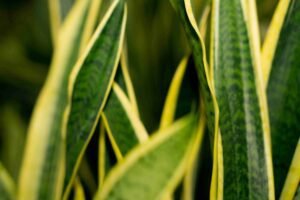Spider Plant Pest Control: Easy Tips for Identification and Prevention
Hey there, plant lovers! If you’ve got a spider plant, you’re in good company—these green beauties are beloved for their ease of care and their vibrant, arching leaves that bring a touch of the tropics to any space. But, even the hardiest of houseplants can encounter a few hiccups along the way, especially when it comes to pests.
Keeping your spider plant healthy and pest-free is crucial to ensuring it thrives and continues to beautify your home. In this blog, we’ll dive into the common pests that might target your spider plant and arm you with the knowledge to keep these little intruders at bay. Whether you’re a seasoned plant parent or just starting out, understanding how to spot and deal with these pesky invaders will help keep your spider plant looking its best. Let’s get into it!
Common Pests Affecting Spider Plants
Alright, let’s dive into the nitty-gritty of spider plant pests! Knowing what kind of troublemakers you might encounter will help you stay one step ahead. Here’s a rundown of the most common pests that love to cozy up to your spider plant:
Aphids
These tiny, pear-shaped critters are usually green, but they can also be black, brown, or pink. They’re known for sucking the sap out of your plant, which can cause leaves to yellow and curl. You might also notice a sticky residue on your plant or nearby surfaces, thanks to their feeding habits.
Spider Mites
Despite their name, spider mites are minuscule and often require a magnifying glass to see clearly. They’re notorious for creating fine webbing on your plant and causing tiny yellow or brown spots on leaves. If you see what looks like a tiny spider’s web on your plant, chances are you’ve got spider mites.
Mealybugs
These guys are pretty distinctive with their white, cottony fluff. They tend to cluster around the base of leaves and in the leaf axils. If you see these soft, white masses, you’ve got mealybugs, which can cause stunted growth and even leaf drop.
Scale Insects
Scale insects look like little brown or gray bumps on the stems and leaves. They can be hard to spot at first because they blend in so well with your plant’s natural textures. Their feeding can cause yellowing and even the death of leaves if not addressed.
Fungus Gnats
These tiny flying insects are more annoying than harmful, but their larvae can wreak havoc on your plant’s roots. If you notice small black flies around your plant or damp soil, you might have a fungus gnat issue. They thrive in moist soil, so overwatering can make your plant a perfect home for them.
By familiarizing yourself with these common pests, you’ll be better equipped to spot and deal with any issues before they get out of hand. Keep an eye out for these sneaky invaders, and you’ll be on your way to a healthy, happy spider plant!
How to Identify Pest Infestations
Spotting pests early is key to keeping your spider plant in top shape. But how do you know when your plant has a pest problem? Let’s break down the signs to watch for and how to keep your eyes peeled for any unwanted guests.
Regular Inspections
First things first—make inspecting your spider plant a part of your routine. A quick check every week can help you catch any issues before they become major problems. Look closely at both the top and underside of the leaves, as pests love to hide in those nooks and crannies.
Common Symptoms to Watch For
- Leaf Discoloration: If you notice your spider plant’s leaves turning yellow or brown, it could be a sign of pest activity. Some pests, like aphids and spider mites, suck the sap out of leaves, leading to discoloration and wilting.
- Sticky Residue: Finding a sticky, sugary substance on your plant or nearby surfaces? That’s likely honeydew, a byproduct of aphid feeding. It can also attract other pests, so it’s a good indicator that something’s amiss.
- Webbing: Tiny webs on your plant could mean spider mites are at work. Look closely at the webbing to see if you can spot these tiny pests.
- Cottony Masses: White, fluffy spots on your plant are a telltale sign of mealybugs. They often cluster in groups and can be easy to spot once you know what you’re looking for.
- Bumps on Stems or Leaves: Hard, brown bumps could be scale insects. These pests can be tricky to spot at first because they blend in with your plant’s natural texture.
By keeping a close eye on your plant and knowing what to look for, you can catch pest problems early and take action before they cause significant damage. Regular check-ups and being vigilant about any changes in your spider plant will help ensure it stays healthy and happy!
Natural Remedies to Protect Your Spider Plant
When it comes to dealing with pests, natural remedies can be your best friends. They’re often effective and less harsh on both your plant and the environment. Here’s a rundown of some tried-and-true methods to keep those pesky critters at bay:
Neem Oil
Neem oil is like a Swiss Army knife for plant care. It works as an insect repellent and disrupts the life cycle of many pests. To use it, mix a tablespoon of neem oil with a quart of water and a few drops of dish soap (which helps the oil stick to the leaves). Spray it on your plant, making sure to cover all surfaces, including the undersides of the leaves. Repeat every 7-10 days until the pests are gone.
Insecticidal Soap
An additional excellent choice is insecticidal soap. It targets soft-bodied insects such as mealybugs and aphids and is composed of natural plant oils and lipids. To apply and mix the product, just follow the directions on the label. Aim to completely cover the pests by spraying it directly onto the plant’s afflicted parts.
Rubbing Alcohol
For those annoying mealybugs and scale insects, rubbing alcohol can be a real game-changer. Dip a cotton swab in rubbing alcohol and gently dab it on the pests. It works by dissolving their protective coatings and killing them. Just be careful not to overdo it, as too much alcohol can harm your plant.
Beneficial Insects
Sometimes, the best defense is a good offense! Introducing beneficial insects like ladybugs or predatory mites can help keep pest populations in check. These helpful bugs will prey on the pests that are causing trouble for your spider plant. You can usually find them at garden centers or online.
Using these natural remedies not only helps you manage pests effectively but also keeps your plant care routine eco-friendly. With a bit of diligence and the right approach, you’ll have your spider plant pest-free and thriving in no time!
Preventative Measures
Alright, now that we’ve covered how to tackle pests when they show up, let’s talk about how to keep them from visiting in the first place. Prevention is key to maintaining a healthy spider plant, and it’s easier than you might think. Here are some simple steps to help you stay ahead of those pesky invaders:
Proper Watering Techniques
Overwatering is a common issue that can lead to pest problems, especially fungus gnats. Make sure you’re letting the top inch of soil dry out before giving your spider plant another drink. Also, ensure your pot has good drainage to avoid soggy soil, which can attract gnats and other pests.
Regular Cleaning
Dust can be a magnet for pests, so give your spider plant a little TLC by wiping down its leaves with a damp cloth. This not only keeps your plant looking great but also helps prevent pests from setting up camp. A clean plant is a happy plant!
Isolation of New Plants
Got a new plant? Great! But before you add it to your indoor garden, keep it isolated for a couple of weeks. This quarantine period helps ensure that any pests hiding on your new plant don’t spread to your existing plants. It’s a smart step to prevent an infestation from taking hold.
Healthy Environment
Pests thrive in unhealthy environments, so keeping your spider plant in good shape can help deter them. Make sure your plant is getting the right amount of light and humidity. Spider plants prefer bright, indirect light and a moderate humidity level. Providing the right conditions helps your plant stay strong and less attractive to pests.
By incorporating these preventative measures into your plant care routine, you’ll create a less inviting environment for pests and help your spider plant stay healthy and vibrant. It’s all about being proactive and keeping an eye out for potential issues before they become big problems. Happy planting!
When to Use Chemical Treatments
While natural remedies are great for many situations, sometimes you might need to pull out the big guns to tackle a stubborn pest problem. If you find that natural methods aren’t cutting it, it’s time to consider chemical treatments. Here’s what you need to know about using these products safely and effectively:
Types of Chemical Pesticides
Chemical pesticides come in a few different types, each designed for specific pest problems:
- Systemic Insecticides: These are absorbed by the plant and work from the inside out. They can be effective against pests like aphids and mealybugs that suck plant sap. You apply these to the soil, and the plant takes them up through its roots.
- Contact Insecticides: These work by directly killing pests on contact. They’re great for pests you can see, like spider mites and scale insects. You spray them directly onto the plant where the pests are active.
Safe Application Practices
Using chemical treatments requires a bit of caution. Always read and follow the label instructions carefully. Wear protective gloves and a mask if recommended, and make sure you’re applying the product in a well-ventilated area. Avoid using too much; more isn’t always better and can harm your plant or the environment.
Environmental Considerations
It’s important to use chemical treatments responsibly to minimize their impact on beneficial insects and the environment. Try to avoid applying chemicals when pollinators like bees are active, and consider using targeted applications rather than broad sprays. If possible, choose products with lower environmental impact.
Sometimes, chemical treatments are necessary to get a pest problem under control, but they should be a last resort after trying natural methods. With careful application and consideration, you can manage pests effectively while keeping your spider plant and the environment safe.
Conclusion
So there you have it—a complete guide to keeping your spider plant free from pests! By knowing how to spot common invaders and using natural remedies to keep them at bay, you’re well on your way to maintaining a healthy and thriving plant. And remember, prevention is key. Regular inspections and proper care can go a long way in keeping your spider plant happy and pest-free.
If you do find yourself facing a more stubborn pest problem, don’t worry. Chemical treatments can be an effective solution when used responsibly. Just make sure to follow the instructions carefully and use them as a last resort.
Your spider plant is a resilient and beautiful addition to your home, and with a little vigilance and the right care, it will continue to be a joy for years to come. Keep up the great work, and happy planting!
YOU CAN ALSO VISIT OUR OTHER BLOGS ON Spider Plant





Pingback: How to Fix Brown Tips on Your Spider Plant: Ultimate Care Guide - Garden Gossips